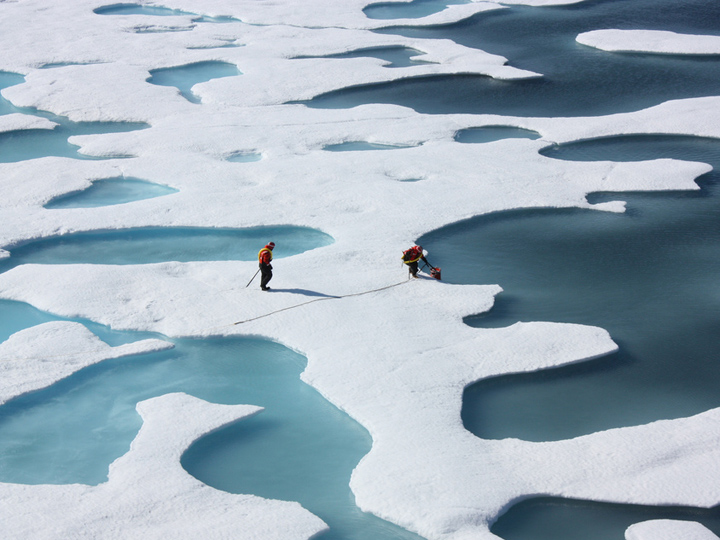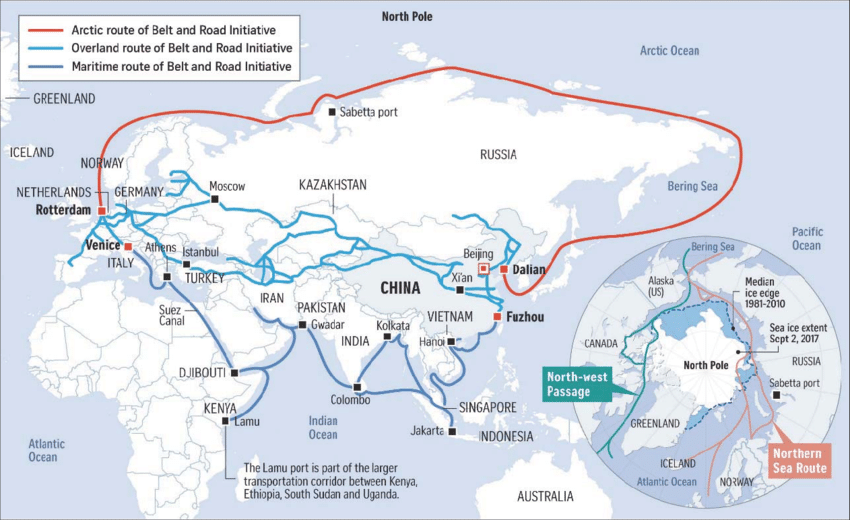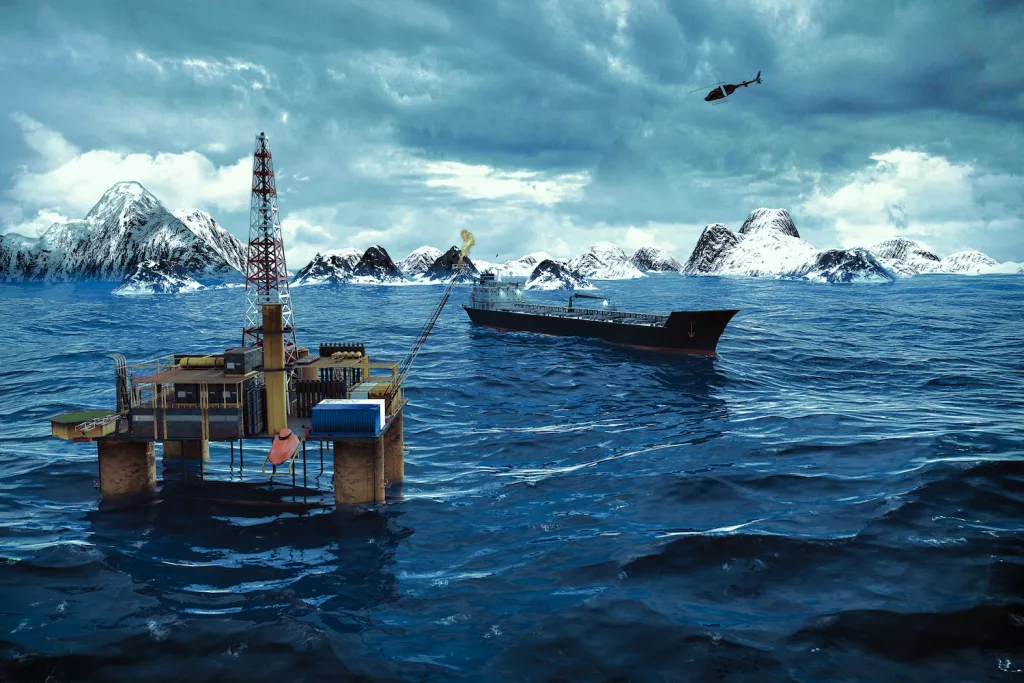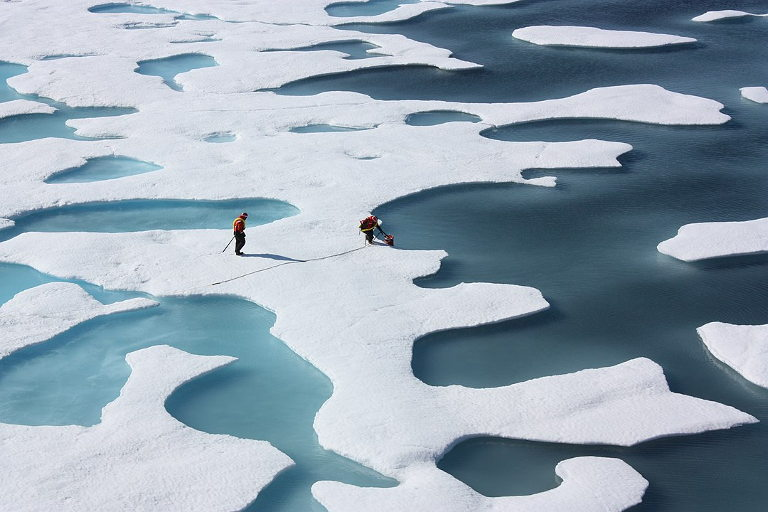 Photo Credit: NASA/Kathryn Hansen
Photo Credit: NASA/Kathryn Hansen
Melt PondsWhen people hear about boats and icebergs, they immediately think of the Titanic disaster. But China has a new, hopeful idea for boats and icebergs: the Polar Silk Road.
The Polar Silk Road (PSR) is a proposed shipping route that takes advantage of new pathways from melted ice. It meanders from China’s coast around Russia to Europe.
The Interaction Council says this route could cut halve the days it takes to get to Rotterdam from China via the Suez Canal.”
 Photo Credit: Alina Kovalenko
Photo Credit: Alina Kovalenko
PSR Route
But what are the environmental impacts of this proposed shipping route?
Research indicates that there are many negative environmental impacts. As industries develop in the Arctic, there may be more tourism, which can damage the Arctic ecosystem.
Ship discharge, ocean dumping and air pollution also threaten the environment and ecology.
However academics claim that because the PSR is shorter than traditional routes, it can decrease carbon emission.
Why is there support for the trading route if it has an adverse impact on the environment?
The short answer is: economic incentive. The Arctic is abundant in natural and energy resources, such as rare earth elements and oil.
 Credit: Livescience
Credit: Livescience
Oil platform in the Arctic Ocean
There is also a political incentive. This initiative would connect China, Europe and the Middle East. It would help China gain a more prominent global leadership role.
And then there is the social incentive. Rising sea levels threaten China’s coastal areas. This initiative would allow China to “understand the Arctic” and address climate change.
Chinese officials are aware of other country’s concerns. Vice-Foreign Minister Kong Xuanyou says that people’s concerns about environmental damage are completely unnecessary. He also states that China will work jointly with the Arctic states.
According to Kong, China will respect the traditions, culture, people and natural environment of the Arctic. We can only wait and see if China will keep its promise.
[zombify_post]


0 Comments